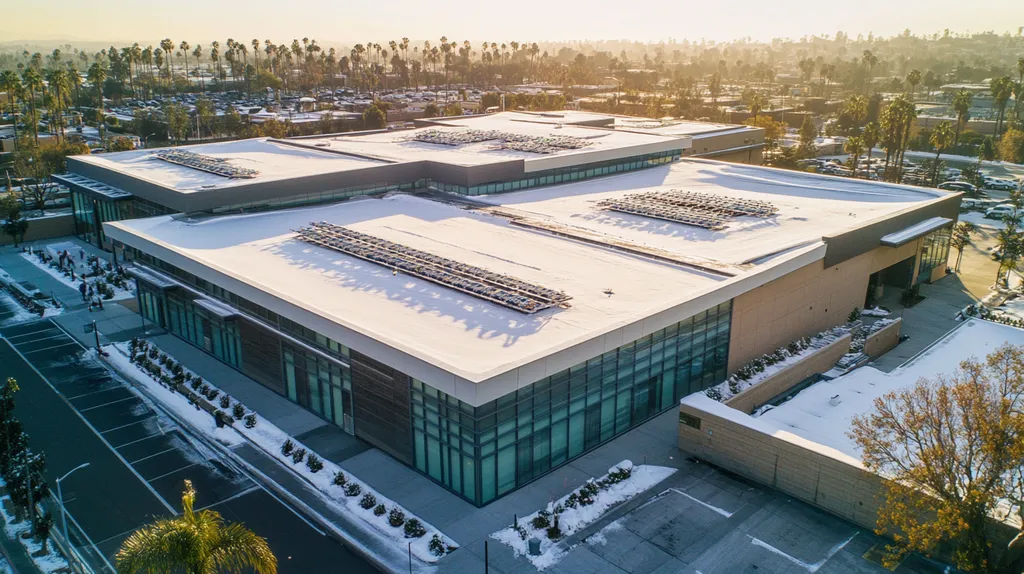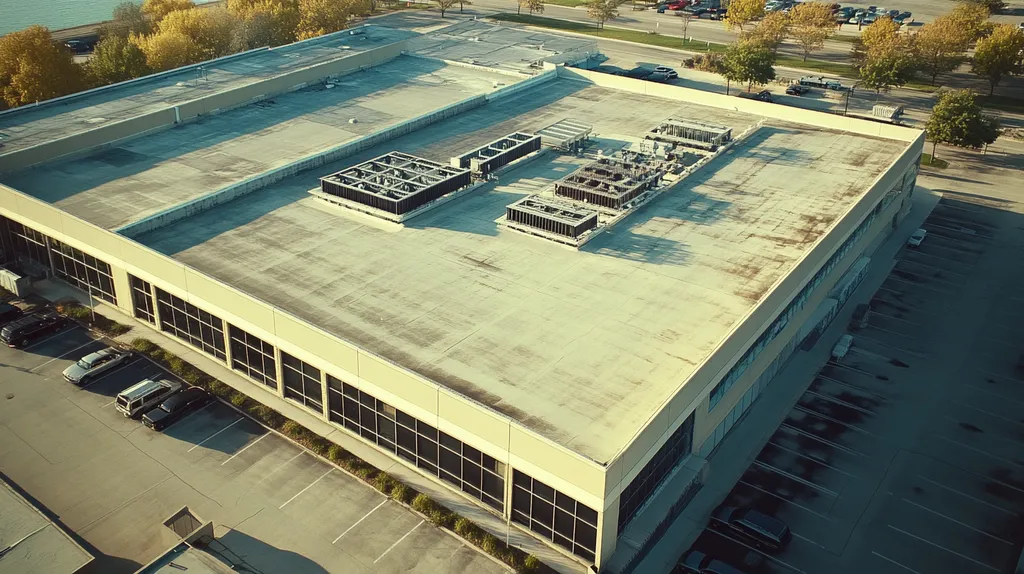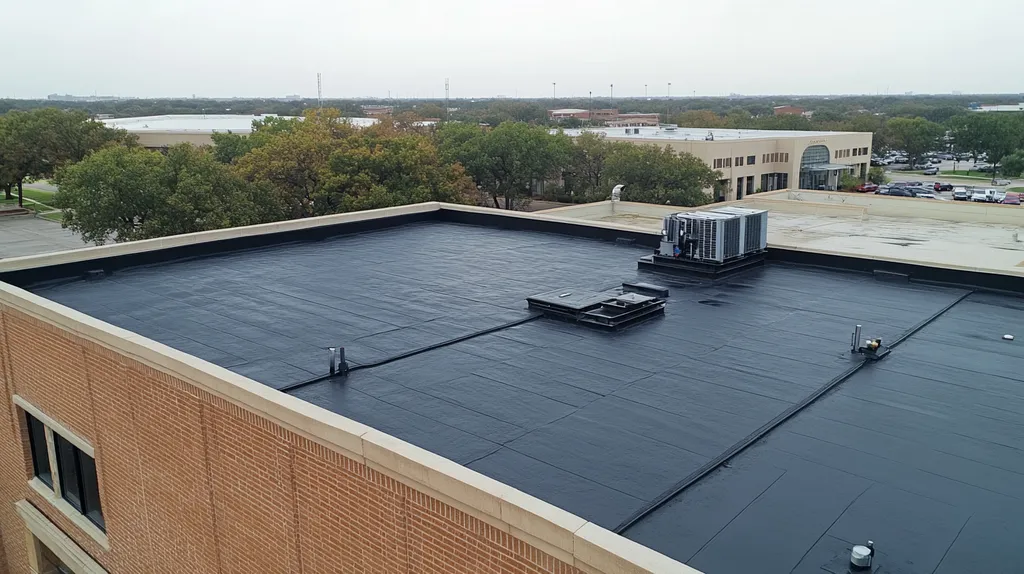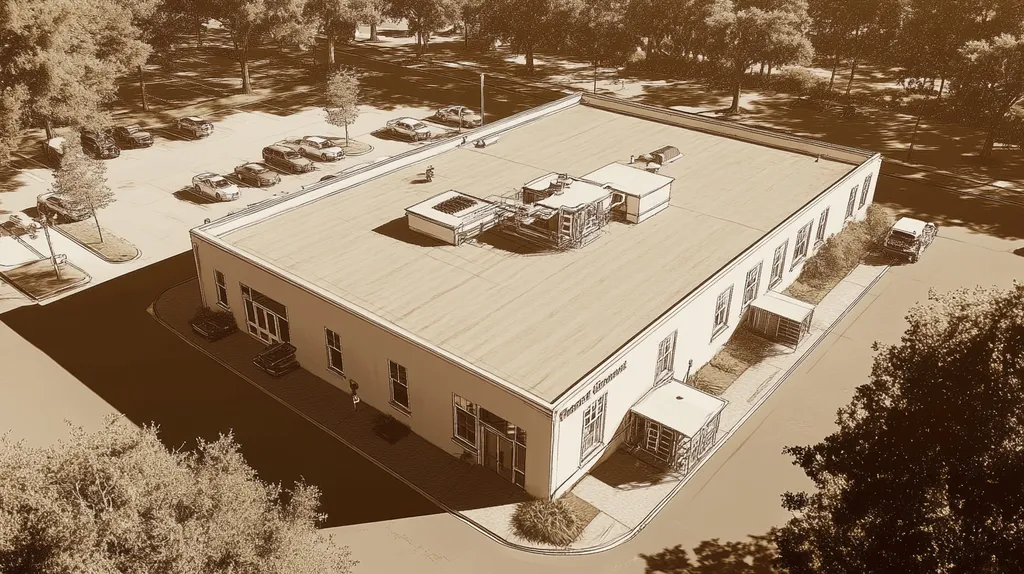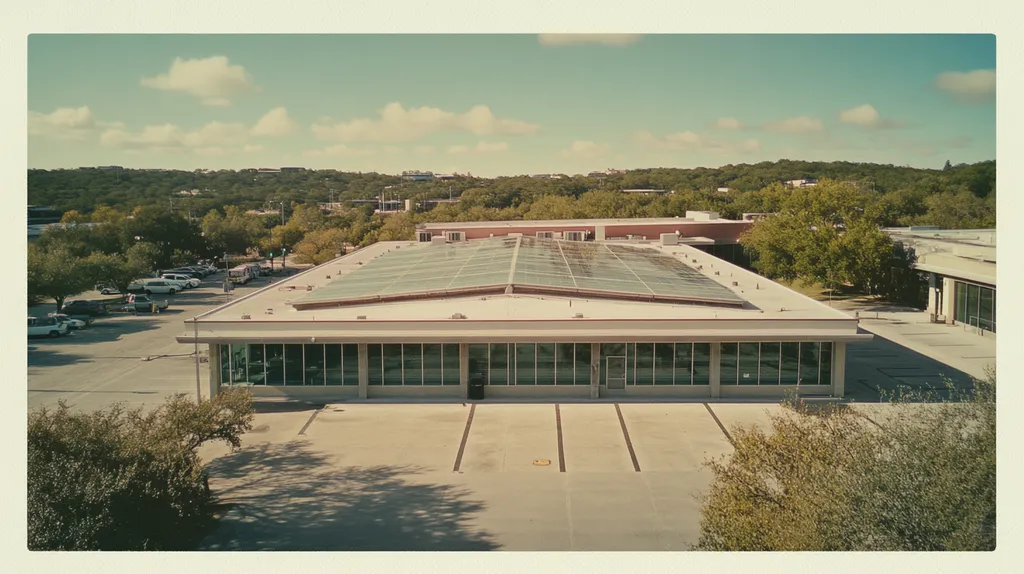Welcome to today’s Battle Royale featuring two roofing heavyweights: “TPO” in the east corner versus “PVC” in the west!
Tonight’s showdown pits these contenders against each other across six punishing rounds designed to test every aspect of their performance for Commercial Roof Safety Codes.
At stake? Millions in potential costs, decades of building protection, and the critical performance demands of modern commercial and industrial facilities.
Our professional judging panel will evaluate each round on technical merit, real-world performance, and value delivery. After all six rounds, we’ll declare our ultimate champion.
Ladies and gentlemen, facility managers and building owners… it’s time to rumble!
ROUND 1: INITIAL COSTS & INSTALLATION
When evaluating commercial roofing systems, initial costs and installation considerations can significantly impact both immediate safety compliance and long-term building protection. The stakes are particularly high as new safety regulations reshape installation requirements, affecting both timeline and budget considerations for property owners.
Material Expenses
Material selection directly influences both initial project costs and long-term safety performance. TPO membranes typically cost 20-30% less than PVC alternatives, making them an attractive option for budget-conscious property owners.
TPO materials average $3.50 to $5.50 per square foot installed, offering competitive pricing without sacrificing basic safety requirements. The lower cost point allows for allocation of resources to other critical safety measures.
PVC systems, while commanding $5.00 to $7.50 per square foot, provide superior chemical resistance and durability. This enhanced protection often translates to fewer safety-related repairs and replacements over time.
Given the significant initial cost advantage and acceptable safety performance, TPO earns the “ADVANTAGE” in material expenses.
Installation Complexity
Recent changes in fall protection requirements are reshaping installation procedures for both systems. New regulations mandate safety measures at 6 feet above ground level instead of the previous 15-foot threshold, adding complexity to all roofing installations. (source: Hazmat School)
TPO installation requires standard heat-welding equipment and basic safety protocols. The straightforward nature of TPO installation allows crews to maintain focus on fall protection compliance while completing the project.
PVC installation demands more specialized welding techniques and equipment, potentially complicating safety measure implementation. The additional complexity can increase both labor costs and safety monitoring requirements.
TPO gains the “ADVANTAGE” here due to its simpler installation process while maintaining safety compliance.
Project Timeline
Project duration significantly impacts business operations and overall safety exposure. Extended installation periods increase the risk of accidents and regulatory violations.
TPO installations typically complete 25-30% faster than comparable PVC projects. This efficiency reduces the duration of elevated fall risks and minimizes the time workers spend in potentially hazardous conditions.
PVC installations require additional time for proper welding and detail work. While this attention to detail can enhance long-term safety, it extends the period during which fall protection measures must be maintained.
The shorter exposure to installation-related safety risks gives TPO the clear “ADVANTAGE” in timeline considerations.
ROUND 1 WINNER: TPO
ROUND 2: DURABILITY & LIFESPAN
When evaluating commercial roofing systems, durability and lifespan directly impact building safety compliance and long-term protection. Recent changes in safety regulations have placed increased emphasis on roofing material performance, particularly in areas with extreme weather conditions or high maintenance traffic.
Durability Under Environmental Stress
The ability to withstand environmental stressors directly affects building safety and code compliance. TPO membranes demonstrate exceptional resistance to UV radiation and ozone exposure, maintaining their protective properties even in intense sunlight conditions.
TPO’s molecular structure provides consistent performance across temperature variations, reducing the risk of material degradation that could compromise safety standards. This stability makes it particularly suitable for regions with dramatic seasonal changes.
PVC roofing exhibits superior chemical resistance but can become brittle in extreme temperatures. This characteristic requires additional safety monitoring and more frequent inspections to maintain compliance with building codes.
Given its superior environmental resilience and consistent performance, TPO claims the “ADVANTAGE” in this category.
Expected Lifespan and Warranty Coverage
Material lifespan significantly impacts safety compliance costs and inspection requirements. TPO systems typically last 15-20 years when properly installed and maintained, with manufacturers offering warranties that align with building code review cycles.
California Code of Regulations requirements for fall protection and safety monitoring become increasingly critical as roofing systems age, affecting both maintenance procedures and safety protocols. Warning lines and designated safe zones must be properly maintained throughout the roof’s lifetime. (source: California Department of Industrial Relations)
PVC systems generally offer longer lifespans, often extending to 25-30 years with appropriate maintenance. Their comprehensive warranty coverage typically includes provisions for safety-related repairs and replacements.
PVC earns the “ADVANTAGE” here due to its extended lifespan and robust warranty protection.
Resistance to Aging and Wear
Physical deterioration can compromise safety features and code compliance over time. TPO membranes incorporate advanced stabilizers that help maintain flexibility and structural integrity as the material ages.
However, TPO can show signs of accelerated wear in areas with heavy foot traffic or frequent maintenance activities. This vulnerability may require additional protective measures to maintain safety compliance.
PVC demonstrates superior resistance to physical wear and punctures, making it ideal for high-traffic areas and maintenance zones. Its consistent performance under stress helps maintain safety standards throughout its service life.
The superior wear resistance and long-term durability give PVC the clear “ADVANTAGE” in this category.
ROUND 2 WINNER: PVC
ROUND 3: PERFORMANCE FACTORS
Commercial roofing performance directly impacts building safety compliance and occupant protection. Recent data shows that over 40% of building envelope failures start with roofing system performance issues, making material selection crucial for long-term safety and code compliance.
With increasing regulatory scrutiny on commercial roof safety, understanding how TPO and PVC perform under real-world conditions has never been more critical. Property owners must carefully evaluate performance factors to ensure their roofing choice meets both current and future safety requirements.
Weather Resistance
Weather resistance directly affects a roof’s ability to maintain safety compliance throughout its lifespan. Warning line systems and other safety features must remain securely anchored regardless of weather conditions.
OSHA specifications require roofing systems to maintain specific safety features, including warning lines capable of withstanding 16-pound forces without failing. These requirements significantly influence material selection and installation methods. (source: OSHA Publication – Protecting Roofing Workers)
TPO membranes demonstrate excellent UV resistance and maintain structural integrity in extreme temperatures. Their molecular structure helps preserve safety system anchor points and walkway demarcations over time.
PVC roofing offers superior chemical resistance and maintains its protective properties even when exposed to harsh industrial environments. This characteristic helps ensure consistent performance of safety features in challenging conditions.
Given its broader spectrum of weather resistance capabilities, PVC claims the “ADVANTAGE” in this category.
Energy Efficiency
Energy performance affects both operating costs and safety compliance requirements. Modern building codes increasingly emphasize energy efficiency as part of overall safety and compliance standards.
TPO systems excel in solar reflectivity, often exceeding 85% reflection rates when newly installed. This performance helps maintain safer roof surface temperatures and reduces thermal stress on safety system components.
PVC membranes provide good reflective properties but typically don’t match TPO’s performance levels. However, they maintain consistent energy efficiency throughout their lifespan with minimal degradation.
The superior initial and long-term reflective properties give TPO the clear “ADVANTAGE” in energy efficiency.
Fire Resistance
Fire safety represents a critical performance factor for commercial roofing systems. Both material selection and installation methods must align with stringent fire safety codes.
TPO membranes meet Class A fire ratings and maintain their fire-resistant properties throughout their service life. The material’s chemical composition helps prevent flame spread and reduces the risk of fire-related failures.
PVC roofing systems also achieve Class A fire ratings and offer self-extinguishing properties. Their performance in fire events often exceeds minimum safety requirements, providing an extra margin of protection.
With both materials demonstrating exceptional fire resistance capabilities, this category results in a “TIE”.
ROUND 3 WINNER: PVC
ROUND 4: MAINTENANCE REQUIREMENTS
Proper maintenance of commercial roofing systems directly impacts building safety compliance and longevity. Recent industry data shows that over 60% of premature roof failures stem from inadequate maintenance practices, creating serious safety risks and code violations. Understanding the specific maintenance requirements for TPO and PVC systems has become increasingly critical as safety regulations evolve.
Regular Inspection Requirements
Commercial roof inspections must follow strict safety protocols to maintain code compliance. TPO systems typically require quarterly inspections to identify potential issues before they compromise safety features or structural integrity.
Warning line systems and other safety components must be regularly verified for proper tension and structural integrity. These elements must resist at least 16 pounds of force without failing, requiring careful monitoring and maintenance throughout the year. (source: OSHA Publication – Protecting Roofing Workers)
PVC roofing systems also demand regular inspections but generally show better resistance to environmental factors. Their superior chemical resistance often results in fewer emergency maintenance calls and safety-related repairs.
Given its more resilient nature and reduced inspection frequency, PVC earns the “ADVANTAGE” in this category.
Cleaning and Preventive Care
Regular cleaning and preventive maintenance significantly impact both safety compliance and system longevity. TPO membranes require careful cleaning to maintain their reflective properties and prevent degradation that could compromise safety features.
The simplified chemical structure of TPO makes basic maintenance straightforward, though it may require more frequent attention. Property owners often appreciate the predictable nature of TPO maintenance schedules.
PVC systems demonstrate superior resistance to contaminants and typically require less intensive cleaning regimens. This characteristic helps maintain safety compliance with minimal intervention.
The reduced maintenance intensity and superior resistance give PVC the “ADVANTAGE” in this category.
Repair Procedures
The complexity and frequency of repairs directly affect ongoing safety compliance and maintenance costs. TPO repairs generally require simple heat-welding techniques, making emergency fixes relatively straightforward.
However, TPO systems may need more frequent repairs as they age, potentially increasing safety monitoring requirements and maintenance expenses. This consideration becomes particularly important in high-traffic areas.
PVC membranes offer superior durability and typically require fewer repairs over their lifespan. When repairs are necessary, they can be completed efficiently without compromising safety features.
With its reduced repair frequency and superior long-term performance, PVC claims the “ADVANTAGE” in this category.
ROUND 4 WINNER: PVC
ROUND 5: SUSTAINABILITY CREDENTIALS
Environmental regulations and sustainability requirements are reshaping commercial roofing decisions across the industry. With new mandates focusing on both safety compliance and environmental impact, property owners must carefully evaluate roofing materials against increasingly stringent standards.
Recent shifts in building codes now emphasize sustainable practices alongside traditional safety requirements, making material selection more complex than ever. Understanding how TPO and PVC membranes align with these evolving standards has become crucial for long-term compliance.
Environmental Impact
Modern building codes increasingly emphasize environmental compliance alongside traditional safety standards. Both roofing systems must undergo rigorous safety testing to maintain UL certification, directly impacting their environmental footprint and installation requirements. (source: Triton Construction Products)
TPO manufacturing produces fewer harmful byproducts and requires less energy consumption. The material’s simplified chemical structure results in minimal environmental impact during production while maintaining required safety standards.
PVC production generates more environmental concerns, particularly regarding chemical emissions and energy consumption. While the finished product meets safety requirements, its manufacturing process raises sustainability questions.
Given its cleaner production process and reduced environmental impact, TPO claims the “ADVANTAGE” in this category.
Life Cycle Assessment
Understanding the complete environmental impact throughout a roof’s service life helps ensure long-term compliance. TPO systems typically maintain their environmental benefits throughout their 15-20 year lifespan.
The material remains fully recyclable at end-of-life, reducing landfill impact. This characteristic becomes increasingly important as disposal regulations tighten.
PVC systems, while durable, present more significant environmental challenges during disposal. Their chemical composition makes recycling more complex and expensive.
TPO’s superior recyclability and simpler disposal process earns it the “ADVANTAGE” in life cycle considerations.
Energy Performance
Energy efficiency requirements continue pushing roofing standards toward better environmental performance. TPO membranes deliver exceptional solar reflectivity, often exceeding 85% when new.
This high reflectivity translates directly into reduced cooling costs and lower carbon emissions. The material maintains these properties effectively throughout its service life.
PVC systems provide good reflective properties but typically can’t match TPO’s performance levels. Their energy efficiency, while acceptable, requires more frequent maintenance to maintain optimal levels.
The superior energy performance and sustained reflectivity give TPO the clear “ADVANTAGE” in this category.
ROUND 5 WINNER: TPO
ROUND 6: SPECIALIZED APPLICATIONS
Specialized roofing applications present unique safety challenges that demand careful material selection. Recent data shows that 45% of commercial roof code violations occur in buildings with complex architectural features or unusual environmental demands, making proper material selection crucial for long-term compliance.
With increasingly stringent safety requirements affecting specialized installations, property owners must understand how different roofing materials perform under challenging conditions. The stakes are particularly high in facilities where standard solutions may compromise safety or code compliance.
Chemical Resistance
Industrial facilities and specialized manufacturing plants often expose roofing materials to harsh chemicals and corrosive substances. TPO membranes offer moderate chemical resistance but may degrade when exposed to certain industrial pollutants or chemical exhausts.
This vulnerability can compromise safety features and require more frequent inspections to maintain code compliance. TPO installations in chemical-exposure areas often need additional protective coatings or barriers.
PVC roofing demonstrates exceptional resistance to chemicals, oils, and industrial contaminants. Its molecular structure maintains integrity even under harsh chemical exposure, helping ensure consistent performance of safety features.
The superior chemical resistance and maintained safety performance give PVC the clear “ADVANTAGE” in this category.
High-Traffic Areas
Rooftop equipment access and maintenance paths require special consideration for safety compliance. Per La Bella PC Insights, employers must implement specific fall protection systems when workers are 15 feet or more from roof edges, affecting both material selection and installation requirements. (source: La Bella PC Insights)
TPO membranes can show premature wear in high-traffic zones, potentially compromising safety features and requiring additional protective measures. This vulnerability often necessitates supplemental walkway materials and more frequent safety inspections.
PVC systems offer superior puncture resistance and durability in high-traffic areas. Their enhanced wear resistance helps maintain safety compliance with minimal additional protection required.
Given its superior durability and reduced need for supplemental protection, PVC earns the “ADVANTAGE” in traffic resistance.
Extreme Temperature Performance
Buildings in regions with extreme temperature variations face unique safety challenges. TPO membranes generally perform well in moderate climates but can show stress under extreme temperature cycling.
This temperature sensitivity may affect the integrity of safety system attachments and require more frequent monitoring of roof-mounted safety equipment. TPO installations in extreme climates often need additional reinforcement.
PVC roofing maintains consistent performance across a broader temperature range. Its stability helps ensure reliable attachment points for safety equipment and consistent performance of emergency access routes.
The superior temperature stability and maintained safety features give PVC the “ADVANTAGE” in extreme conditions.
ROUND 6 WINNER: PVC
AND THE WINNER IS…
After six grueling rounds of technical evaluation, we have our verdict…
In a split decision that went the distance, PVC claims the championship belt with four rounds to TPO’s two! PVC dominated the crucial categories of durability, performance, maintenance, and specialized applications, showcasing its superior staying power and technical prowess.
PVC’s victory stems from its exceptional chemical resistance, outstanding longevity, and unmatched performance in demanding environments. When the pressure mounted in specialized applications and high-stakes maintenance scenarios, PVC demonstrated why it’s considered the heavyweight champion of commercial roofing.
However, don’t count TPO out! This scrappy contender showed impressive strength in sustainability and initial cost considerations. For properties in moderate climates with standard usage patterns, TPO remains a formidable challenger that can deliver outstanding value.
Important Notice: Every building presents unique challenges that can impact material selection. Local climate conditions, regulatory requirements, and specific property characteristics all play crucial roles in determining the optimal roofing solution. This analysis provides general guidance but cannot account for all variables. Always consult qualified roofing professionals who can evaluate your specific situation before making a final decision.
In the high-stakes world of commercial roofing, remember: The true champion isn’t the material with the most wins – it’s the one that best protects your specific building while maintaining crucial safety compliance.
FREQUENTLY ASKED QUESTIONS
Q. What are the initial costs for a commercial roof?
A. Initial costs can vary significantly depending on the material you choose. TPO typically costs 20-30% less than PVC, making it a budget-friendly option for property owners. However, investing in quality materials can lead to better long-term safety compliance and lower maintenance costs.
Q. Which roof material lasts longer, TPO or PVC for industrial roofs?
A. PVC roofing systems typically last longer than TPO, often extending up to 25-30 years with proper maintenance. TPO membranes usually last 15-20 years. Considering the longer lifespan of PVC can be crucial for ensuring ongoing safety compliance over time.
Q. How do TPO and PVC roofs perform in extreme weather?
A. TPO roofs perform well in moderate climates but may experience stress in extreme conditions. PVC roofing maintains consistent performance across varied temperatures, providing reliable safety for structures facing harsh weather. Evaluating the local climate is vital when selecting materials for durability and compliance.
Q. What are the maintenance needs for a commercial roof?
A. Regular inspections and maintenance are crucial for all commercial roofs. TPO roofs generally require quarterly inspections to prevent safety issues, while PVC roofs may require less frequent maintenance due to their superior durability. Adhering to maintenance schedules ensures long-lasting performance and compliance with safety codes.
Q. How important is fire resistance in commercial roofs?
A. Fire resistance is a critical safety factor for commercial roofs. Both TPO and PVC membranes achieve Class A fire ratings, complying with safety standards. Ensuring your roofing choice meets these fire safety requirements is vital for protecting property and people from potential hazards.
Q. Can TPO and PVC roofs be recycled?
A. Yes, TPO roofs are fully recyclable at the end of their lifespan, minimizing landfill impact. PVC materials can be more challenging to recycle due to their composition. Prioritizing recyclable options not only supports compliance with environmental standards but also promotes sustainability in roofing choices.
Q. What role does energy efficiency play in commercial roofing?
A. Energy efficiency impacts operating costs and compliance with building codes. TPO roofs excel in solar reflectivity, helping keep roof temperatures cooler and lowering energy costs. Choosing an energy-efficient roofing option is essential for overall safety compliance and long-term financial savings.

